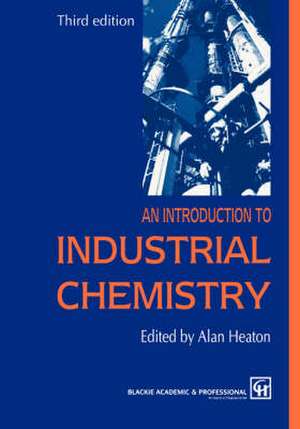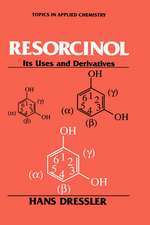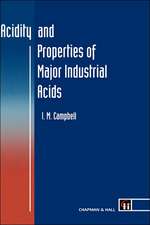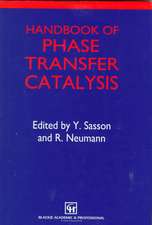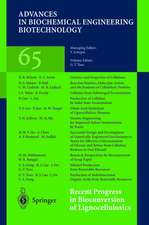An Introduction to Industrial Chemistry
Autor C. A. Heatonen Limba Engleză Paperback – 31 dec 1995
| Toate formatele și edițiile | Preț | Express |
|---|---|---|
| Paperback (2) | 395.09 lei 6-8 săpt. | |
| Springer Us – mar 1991 | 395.09 lei 6-8 săpt. | |
| SPRINGER NETHERLANDS – 31 dec 1995 | 989.14 lei 6-8 săpt. |
Preț: 989.14 lei
Preț vechi: 1206.27 lei
-18% Nou
Puncte Express: 1484
Preț estimativ în valută:
189.27€ • 198.12$ • 157.53£
189.27€ • 198.12$ • 157.53£
Carte tipărită la comandă
Livrare economică 31 martie-14 aprilie
Preluare comenzi: 021 569.72.76
Specificații
ISBN-13: 9780751402728
ISBN-10: 0751402729
Pagini: 436
Ilustrații: XXII, 413 p. 7 illus.
Dimensiuni: 178 x 254 x 23 mm
Greutate: 1.7 kg
Ediția:3rd ed. 1996
Editura: SPRINGER NETHERLANDS
Colecția Springer
Locul publicării:Dordrecht, Netherlands
ISBN-10: 0751402729
Pagini: 436
Ilustrații: XXII, 413 p. 7 illus.
Dimensiuni: 178 x 254 x 23 mm
Greutate: 1.7 kg
Ediția:3rd ed. 1996
Editura: SPRINGER NETHERLANDS
Colecția Springer
Locul publicării:Dordrecht, Netherlands
Public țintă
ResearchCuprins
Editorial introduction.- The importance of industrial chemistry.- Statistics.- Units and nomenclature.- General bibliography.- References.- 1 Introduction.- 1.1 Characteristics of the industry.- 1.2 Scale of operations.- 1.3 Major chemical producing countries.- 1.4 Major sectors and their products.- 1.5 Turning chemicals into useful end products.- 1.6 Environmental issues.- 1.7 Quality and safety.- 2 Sources of chemicals.- 2.1 Introduction.- 2.2 Sources of organic chemicals.- 2.3 Sources of inorganic chemicals.- 2.4 Recycling of materials.- References.- 3 Research and development.- 3.1 General introduction.- 3.2 Research and development activities.- 3.3 The importance of research and development.- 3.4 Differences between academic and industrial research.- 3.5 Research and development case studies.- 3.6 Conclusions.- 4 The world’s major chemical industries.- 4.1 History and development of the chemical industry.- 4.2 The chemical industry today.- 4.3 The United Kingdom chemical industry.- 4.4 The U.S. chemical industry.- 4.5 Other chemical industries.- 4.6 World’s major chemical companies.- 4.7 General characteristics and future of the chemical industry.- References.- 5 Organizational structures: A story of evolution.- 5.1 Introduction.- 5.2 The chemical industry in the 1990s.- 5.3 Why change organizational structures?.- 5.4 Pre-structure decisions.- 5.5 Which type of structure?.- 5.6 Joint ventures and strategic alliances.- 5.7 Summary.- References.- 6 Technological economics.- 6.1 Introduction.- 6.2 Cost of producing a chemical.- 6.3 Variable costs.- 6.4 Fixed costs.- 6.5 Direct, indirect and capital related costs.- 6.6 Profit.- 6.7 Effects of scale operation.- 6.8 Effect of low rate operation.- 6.9 Diminishing return.- 6.10 Absorption costing and marginality.- 6.11 Measuring profitability.- 6.12 Time value of money.- 6.13 Project evaluation.- 6.14 Conclusion.- Appendix (D.C.F. calculations).- References.- 7 Chemical engineering.- 7.1 Introduction.- 7.2 Material balances.- 7.3 Energy balances.- 7.4 Fluid flow.- 7.5 Heat transfer.- 7.6 Separation processes.- 7.7 Process control.- References.- 8 Energy.- 8.1 Introduction.- 8.2 Types of energy.- 8.3 Use of energy in the chemical industry.- 8.4 Efficient utilization of energy.- 8.5 Conclusions.- References.- 9 Environmental impact of the chemical industry.- 9.1 The environment and human interactions.- 9.2 Sources of pollution.- 9.3 Options for the control and treatment of pollution and wastes from industrial sites.- 9.4 Health and safety at work and hazards of the chemical industry.- 9.5 Conclusions — legislative controls affecting the environmental impact of the chemical industry.- References.- 10 Chlor-alkali products.- 10.1 Introduction.- 10.2 Uses of chlorine.- 10.3 Uses of caustic soda (sodium hydroxide).- 10.4 Uses of hydrogen.- 10.5 Types of cell.- 10.6 Future developments.- 11 Catalysts and catalysis.- 11.1 Introduction.- 11.2 Definitions and constraints.- 11.3 Thermodynamic relationships.- 11.4 Homogeneous catalysis.- 11.5 Heterogenization of homogeneous catalytic systems.- 11.6 Heterogeneous catalysis.- 11.7 Applications and mechanisms.- 11.8 The future.- References.- 12 Petrochemicals.- 12.1 Introduction.- 12.2 Crude oil, gas and refinery operations.- 12.3 Lower olefins (alkenes) and acetylene (ethyne).- 12.4 Synthesis gas, ammonia and methanol.- 12.5 Acetic (ethanoic) acid and anhydride.- 12.6 C1 products.- 12.7 C2 products.- 12.8 C3 products.- 12.9 C4 products.- 12.10 C5 aliphatics.- 12.11 Aromatics.- 12.12 Nylon intermediates.- 12.13 The future.- References.- Periodical special issues and supplement.
Recenzii
`...the best student text on industrial chemistry available today.'
Industrial Chemistry
Industrial Chemistry
